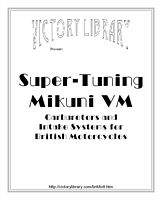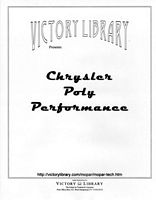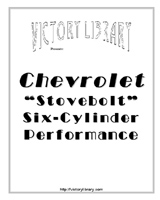|
|
 |
In this series, I will not repeat the information that is already available on how superchargers work, but instead focus on their selection, installation, use and tuning on older engines. Here I will make various observations and comments on function, and in some cases how to make improvements. New material will be added regularly, and eventually better organized. Click below to jump directly to an individual topic. |
Supercharger Topics |
|
|
|
|
|
|
Function |
|
|
|
|
|
GMC blowers were frequently original equipment on large diesel bus engines; “GMC” is General Motors Coach Division.
The numbers by which they are frequently identified contain a code as to the original application: the engine for which it was designed, and some information as to the pumping capacity of that model. There are 3 common rotor diameters, and up to 7 case and |
 |
|
rotor lengths in some types.
The prefix is the case length (3-, 4-, etc.).
The suffix indicate inches per cylinder on the original installation motor (-53, -71, -92), and determine the rotor center to center distance and case width.
The actual supercharger displacement is less than the engine size; an original GMC 6-71 transfers 339” per revolution, a Weiand 6-71 replica 411”, a Weiand 8-71 replica 438”.
The rotor length is not directly proportionate to capacity: the 6-71 rotor is 15” long, the 8-71 rotor is 16” long, the 16-71 rotor is 20” long.
The helix angle of the original -71 series is 30°; aftermarket superchargers are frequently pitched at higher angles.
Although frequently used to supercharge V8 engines, none of these were originally made for this purpose. The most frequently used size for street engines are 4-71, 6-71 & 8-71. Aftermarket replicas are made in even larger sizes. Shown here is a 6-71, as seen from the top (carburetor mounting surface), click for a larger view. Even the smallest of these (3-53) is very bulky and inefficient compared to more modern designs such as the Eaton.
The name “GMC” or “Jimmy” has become generic, including the common automotive and industrial BDS, Dyer, GMC, Hampton, Mooneyham, Littlefield, &c. For more Roots information:  . . |
See these Victory Library booklets |

|

|

|

|

|

|

|

|

|

|

|
|



